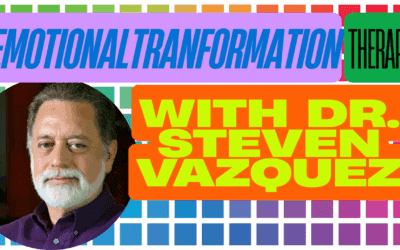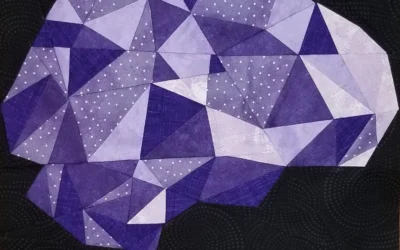What is Holographic Memory Resolution (HMR) Therapy?
Holographic Memory Resolution (HMR) is an innovative therapeutic approach that combines elements of traditional psychotherapy with concepts from quantum physics and holographic theory. Developed in the 1990s, HMR aims to address traumatic memories and their associated emotional and physical responses by working with the body’s energy field and the holographic nature of memory storage in the brain.
HMR therapy is based on the premise that traumatic memories are stored in the body as holographic imprints, containing not only the visual and auditory components of the experience but also the associated emotions, physical sensations, and beliefs. By accessing these holographic imprints, HMR practitioners believe they can help clients process and release traumatic experiences more effectively than through traditional talk therapy alone.
Who Created Holographic Memory Resolution and What Led to Its Development?
Holographic Memory Resolution was developed by Brent Baum, a licensed therapist and former Catholic priest. Baum’s journey towards creating HMR began in the 1980s when he experienced a personal crisis that led him to explore alternative healing modalities.
Baum’s background in theology, counseling, and addiction treatment provided a unique perspective that influenced the development of HMR. His experiences working with trauma survivors and individuals struggling with addiction led him to recognize the limitations of traditional talk therapy in addressing deeply ingrained traumatic memories.
In the early 1990s, Baum began to integrate concepts from quantum physics, holographic theory, and energy medicine into his therapeutic approach. He was particularly inspired by the work of neuroscientist Karl Pribram and physicist David Bohm, who proposed that the brain functions like a hologram, storing information in a distributed manner throughout its structure.
What Were the Cultural and Scientific Influences on HMR’s Development?
The development of HMR occurred during a time of growing interest in alternative and complementary therapies. Several cultural and scientific trends influenced its creation:
- The New Age movement: The 1990s saw an increased openness to spiritual and alternative healing practices, which provided a receptive environment for novel therapeutic approaches.
- Advances in neuroscience: Research into brain plasticity and the neurobiological effects of trauma was expanding, offering new insights into how traumatic experiences are processed and stored.
- Mind-body connection: There was a growing recognition of the interconnectedness of mental and physical health, leading to more holistic approaches to healing.
- Quantum physics and consciousness: Theories linking quantum mechanics to consciousness and human experience were gaining popularity, influencing various fields, including psychology.
- Energy psychology: The emergence of energy-based therapeutic approaches, such as Thought Field Therapy (TFT) and Emotional Freedom Techniques (EFT), paved the way for modalities that incorporated concepts of energy fields in healing.
How Does HMR Conceptualize Trauma and Memory?
HMR views traumatic memories as holographic imprints stored not only in the brain but throughout the body’s energy field. These imprints are believed to contain all aspects of the traumatic experience, including:
- Visual and auditory information
- Emotional responses
- Physical sensations
- Beliefs and cognitions formed during the event
- Energetic patterns associated with the trauma
According to HMR theory, these holographic imprints can be accessed and resolved by working with the body’s energy field and the client’s conscious awareness. The model suggests that traumatic memories are stored in a “frozen” or unprocessed state, contributing to ongoing distress and maladaptive behaviors.
What Are the Core Assumptions and Tenets of HMR?
Holographic Memory Resolution is based on several key assumptions and principles:
- Holographic nature of memory: Memories are stored holographically throughout the brain and body, containing multisensory information.
- Body-mind connection: Physical sensations and emotions are intrinsically linked to traumatic memories.
- Energy fields: The body has an energy field that can be accessed and manipulated for healing purposes.
- Conscious resolution: Traumatic memories can be resolved by bringing them into conscious awareness and processing them in a safe, controlled manner.
- Non-retraumatization: HMR aims to access and resolve traumatic memories without requiring clients to fully relive the traumatic experience.
- Self-healing capacity: The body and mind have an innate ability to heal when given the proper tools and environment.
- Quantum healing: Changes at the energetic level can lead to rapid shifts in emotional and physical well-being.
What Are the Goals and Stages of Treatment in HMR?
The primary goals of Holographic Memory Resolution therapy include:
- Accessing and identifying traumatic memory imprints
- Resolving emotional and physical responses associated with trauma
- Integrating fragmented aspects of the self
- Promoting overall healing and well-being
The treatment process in HMR typically involves several stages:
- Assessment: The therapist works with the client to identify traumatic experiences and their associated symptoms.
- Accessing the holographic imprint: Through guided visualization and body awareness techniques, the client accesses the holographic memory imprint.
- Resolution: The therapist guides the client through a process of observing and releasing the emotional and energetic components of the traumatic memory.
- Integration: The resolved memory is integrated into the client’s conscious awareness, promoting a sense of wholeness and healing.
- Reinforcement: The client practices techniques to reinforce the resolution and prevent reactivation of the traumatic imprint.
What Are the Interventions and Techniques Used in HMR?
Holographic Memory Resolution employs a variety of interventions and techniques to access and resolve traumatic memories:
Guided Visualization
Clients are guided through visualizations to access the holographic memory imprints. These visualizations may involve imagining a safe space, a control room, or other metaphorical environments that allow for safe exploration of traumatic memories.
Body Scanning
Practitioners guide clients to scan their bodies for physical sensations associated with traumatic memories. This technique helps identify where trauma may be stored in the body and provides a starting point for resolution.
Energy Field Manipulation
HMR therapists may use hands-on or hands-off techniques to work with the client’s energy field, believed to help release trapped emotional energy associated with traumatic memories.
Color Therapy
Colors are often used in HMR to represent different emotional states or aspects of the traumatic experience. Clients may be asked to visualize colors changing as a way of processing and releasing emotions.
Emotional Release Techniques
Various methods are employed to facilitate the release of trapped emotions, including breathwork, sound, and movement.
Cognitive Restructuring
As traumatic memories are accessed and processed, clients are guided to develop new, more adaptive beliefs and cognitions related to the experience.
Timeline Work
Clients may be guided to visualize a timeline of their life, identifying and resolving traumatic events at different points in their personal history.
Inner Child Work
HMR often incorporates techniques to connect with and heal aspects of the self that were wounded during childhood trauma.
Somatic Experiencing
Elements of somatic experiencing are integrated into HMR, focusing on bodily sensations and their connection to traumatic memories.
Mindfulness Practices
Mindfulness techniques are used to help clients stay present and grounded during the memory resolution process.
Is HMR Therapy Evidence-Based?
While Holographic Memory Resolution has gained popularity among some practitioners and clients, it is important to note that the approach lacks substantial empirical evidence from rigorous scientific studies. The theory behind HMR, particularly its reliance on concepts from quantum physics and holographic theory as applied to psychology, remains largely theoretical and has not been validated by mainstream scientific research.
Currently, there are no published randomized controlled trials specifically examining the efficacy of HMR. Most of the support for the approach comes from anecdotal evidence, case studies, and the personal experiences of practitioners and clients.
The lack of empirical evidence does not necessarily mean that HMR is ineffective. However, it does highlight the need for more rigorous scientific investigation to validate its claims and understand its potential benefits and limitations. Until such research is conducted, HMR should be considered an experimental or alternative approach rather than an evidence-based treatment.
In What Contexts is HMR Usually Practiced?
Holographic Memory Resolution is typically practiced in the following contexts:
- Private practice settings: Many HMR practitioners offer the therapy in their individual or group practices.
- Holistic healing centers: Some alternative or complementary medicine centers may include HMR as part of their treatment offerings.
- Workshops and retreats: HMR techniques are often taught in workshop settings, allowing practitioners to learn and experience the approach firsthand.
- Addiction treatment facilities: Some addiction recovery programs have incorporated HMR as a complementary approach to traditional addiction treatment.
- Trauma recovery programs: Specialized trauma treatment centers may offer HMR as an alternative or adjunct to other trauma-focused therapies.
- Mind-body clinics: Integrative medicine clinics that focus on the mind-body connection may include HMR in their treatment options.
It’s important to note that HMR is not typically offered in mainstream medical or psychiatric settings due to its lack of empirical validation.
What is Unique and Different About HMR Compared to Other Therapy Models?
Holographic Memory Resolution stands out from other therapeutic approaches in several ways:
- Holographic theory application: HMR uniquely applies concepts from holographic theory and quantum physics to understanding and treating psychological trauma.
- Energy field focus: While some other therapies incorporate energy work, HMR places a central focus on working with the body’s energy field to access and resolve traumatic memories.
- Non-verbal processing: HMR emphasizes non-verbal techniques for processing trauma, which may be beneficial for clients who struggle with traditional talk therapy.
- Rapid resolution claims: Proponents of HMR suggest that it can lead to faster resolution of traumatic memories compared to traditional psychotherapy approaches.
- Mind-body-spirit integration: HMR aims to address trauma on multiple levels simultaneously, integrating mental, physical, and spiritual aspects of healing.
- Metaphorical framework: The use of metaphors and visualizations in HMR provides a unique framework for understanding and working with traumatic memories.
- Emphasis on body wisdom: HMR places a strong emphasis on the body’s innate wisdom and ability to heal itself when given the proper tools and environment.
How Does HMR Compare to Other Psychotherapy Models?
Holographic Memory Resolution shares some similarities with other psychotherapy models while maintaining its unique approach:
Eye Movement Desensitization and Reprocessing (EMDR)
Like EMDR, HMR aims to process traumatic memories without requiring full re-experiencing. Both approaches incorporate bilateral stimulation, though HMR focuses more on energy field manipulation.
Somatic Experiencing
HMR and Somatic Experiencing both emphasize the importance of bodily sensations in processing trauma. However, HMR incorporates more metaphysical concepts and energy work.
Internal Family Systems (IFS)
Both HMR and IFS work with different aspects or parts of the self. HMR frames this work within a holographic model, while IFS uses a systems approach.
Emotional Freedom Techniques (EFT)
HMR and EFT both incorporate energy psychology principles. However, HMR has a stronger focus on memory resolution, while EFT emphasizes meridian tapping.
Gestalt Therapy
Like Gestalt therapy, HMR emphasizes present-moment awareness and holistic healing. However, HMR incorporates more specific techniques for memory resolution.
Transpersonal Psychology
HMR shares with transpersonal psychology an openness to spiritual and metaphysical concepts in the healing process.
Cognitive-Behavioral Therapy (CBT)
While HMR differs significantly from CBT in its approach, both aim to change maladaptive thoughts and behaviors associated with traumatic experiences.
What is the Timeline of HMR’s Development and Dissemination?
The development and dissemination of Holographic Memory Resolution can be traced through the following timeline:
- Late 1980s: Brent Baum begins exploring alternative healing modalities following a personal crisis.
- Early 1990s: Baum starts integrating concepts from quantum physics and holographic theory into his therapeutic work.
- 1995: Baum formally introduces Holographic Memory Resolution as a distinct therapeutic approach.
- 1997: Publication of Baum’s book “Living As Light: A Source for Personal and Planetary Transformation,” which introduces HMR concepts to a wider audience.
- Late 1990s – Early 2000s: Baum begins offering training workshops in HMR techniques to other therapists and healing practitioners.
- 2000s: HMR gains popularity among some alternative and holistic healing practitioners, particularly in the United States.
- 2010s: Continued expansion of HMR training programs and integration into some complementary medicine settings.
- Present: While remaining outside mainstream psychotherapy, HMR continues to be practiced and taught by a dedicated community of practitioners.
How Does HMR Conceptualize Identity and Self?
Holographic Memory Resolution views the self and identity through a holographic lens, suggesting that:
- The self is multidimensional: Like a hologram, each part of the self contains information about the whole.
- Trauma fragments the self: Traumatic experiences can create fragmented aspects of identity that become disconnected from the whole.
- Healing involves integration: The goal of therapy is to reintegrate fragmented aspects of the self into a cohesive whole.
- The body holds identity: Physical sensations and energy patterns are seen as integral parts of identity and self-expression.
- Consciousness is key: Expanding conscious awareness is viewed as essential for healing and self-realization.
- The self is connected to a larger field: HMR posits that individual identity is part of a larger universal consciousness or energy field.
What Are the Potential Benefits and Limitations of HMR?
Potential Benefits:
- Rapid resolution of traumatic memories for some clients
- Non-verbal processing options for those who struggle with talk therapy
- Integration of mind-body-spirit approaches to healing
- Empowerment of clients through self-healing techniques
- Potential for addressing deeply rooted traumas that may not respond to traditional therapies
Limitations:
- Lack of empirical evidence supporting its efficacy
- Reliance on metaphysical concepts that are not scientifically validated
- Potential for misuse or misapplication by inadequately trained practitioners
- Risk of retraumatization if not practiced skillfully
- May not be suitable for all clients, particularly those with severe mental health conditions
- Limited acceptance in mainstream psychological and medical communities
How Might HMR Techniques Be Integrated into Modern Therapy Practice?
While Holographic Memory Resolution as a complete system may not be widely adopted in mainstream therapy, some of its techniques and principles could potentially be integrated into modern practice:
- Body awareness: Incorporating more focus on bodily sensations and their connection to emotional states.
- Visualization techniques: Using guided imagery to help clients access and process difficult memories.
- Energy awareness: Encouraging clients to be mindful of their perceived energy levels and patterns.
- Metaphorical frameworks: Utilizing metaphors to help clients conceptualize and work with complex emotional experiences.
- Non-verbal processing: Incorporating more non-verbal techniques for clients who struggle with traditional talk therapy.
- Holistic perspective: Adopting a more integrative view of mental, physical, and spiritual aspects of healing.
- Empowerment focus: Emphasizing the client’s innate capacity for self-healing and personal growth.
- Present-moment awareness: Incorporating mindfulness techniques to help clients stay grounded during memory processing.
It’s important to note that any integration of HMR techniques into mainstream practice should be done cautiously and in conjunction with evidence-based approaches. Therapists should be transparent about the experimental nature of these techniques and obtain informed consent from clients.


























0 Comments